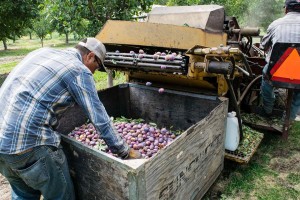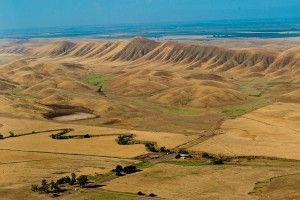As we are starting to approach harvest season in the Sacramento Valley, the water resources managers continue to work overtime this summer to pursue thoughtful and creative ways to stretch every drop of available water.

We have learned a lot this year as we head into the late summer. Most notably, this year has revealed the value of both surface and groundwater storage. With the lowest snowpack in our lifetime, the only water available for this year is already in storage in a reservoir or aquifer. As I look around the Sacramento Valley, I am thankful our predecessors had the foresight to build surface storage reservoirs that surround this great Valley, providing water this year for our farms, the cities and rural communities, the refuges and managed wetlands, the cold water for salmon and other fisheries, and recreation. Even though the reservoirs are lower than normal, the available water is a savior . It is important to recognize that the use of surface water in the Sacramento Valley allows groundwater pumpers throughout the region to access reliable groundwater resources, even in this very dry year.
I am also thankful our urban friends to the south and west have invested billions of dollars over the past several decades to build their own surface reservoirs and groundwater banks. It is this investment in storage that is helping our urban areas and California through this long dry period without panicking and over-reacting.
As we look forward, it seems so obvious we need Sites Reservoir, a large off-stream regulating reservoir on the west side of the Valley. The Department of Water Resources (DWR) has analyzed that if Sites reservoir was in place in 2015, it would have stored an additional 410,000 acre-feet of water during this water year, even during a very dry year. The water that would have filled Sites reservoir is largely from the atmospheric river in December 2014 and the February 2015 storm. In wet years, the amount of water stored in Sites would be even larger. Additionally, Sites would allow additional water to be stored in other Sacramento Valley reservoirs (i.e., Shasta, Folsom, Oroville) through exchanges that could provide more reliable water for every use, including cold water for the benefit of salmon in Sacramento Valley river systems. In 2015, DWR estimated there would be an additional 280,000 acre-feet of water in Lake Shasta for cold water management, which would surely have been a blessing this year – as we work through a complex temperature management plan on the Sacramento River.

The dry year has also shown the value of sustainable groundwater resources in areas where surface supplies are not available. In the Sacramento Valley, local agency leaders are building on a solid foundation of sustainable groundwater management and are continuing these efforts by beginning to implement the new Sustainable Groundwater Management Act (SGMA) throughout the Sacramento Valley.
Please join NCWA and me in showing appreciation to water resource managers who are making water work creatively and efficiently across the Sacramento Valley, supporting Sites Reservoir’s development, and recognizing the incredible value of water storage reservoirs in this region we call home.



